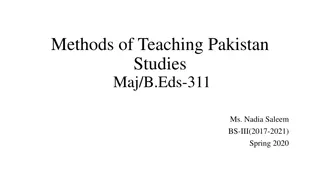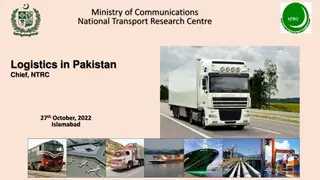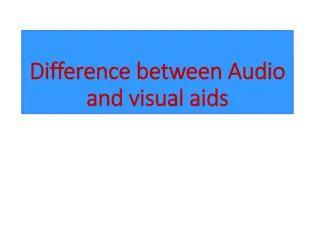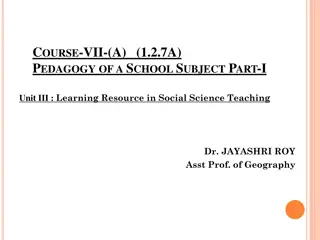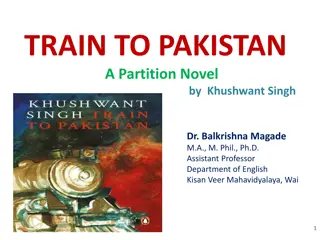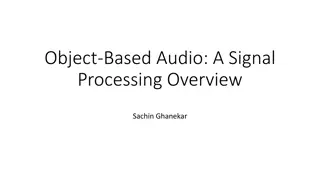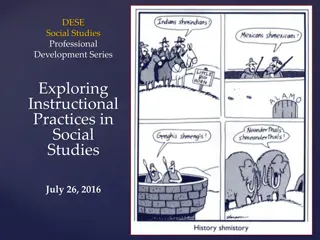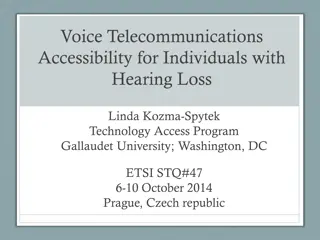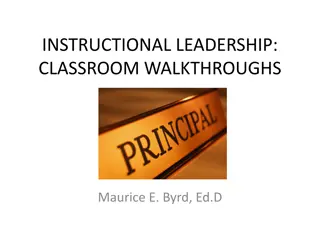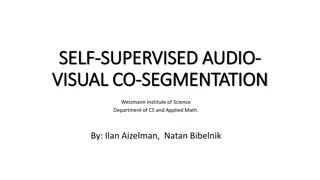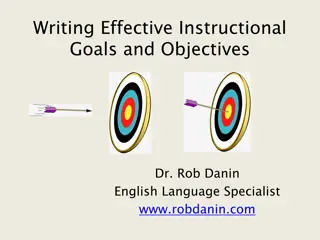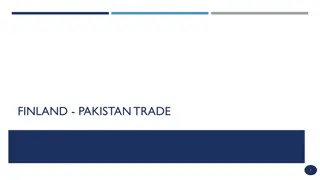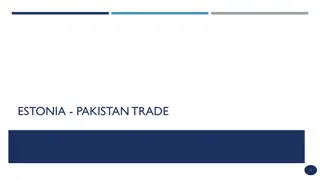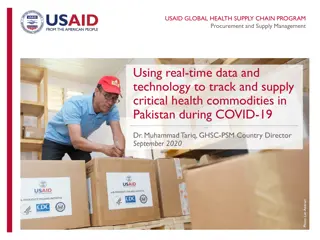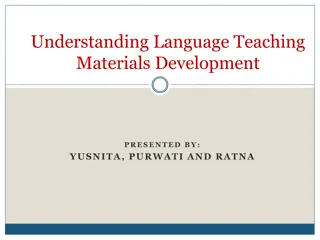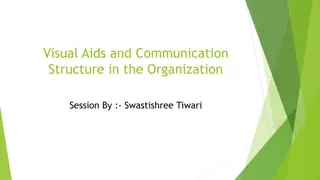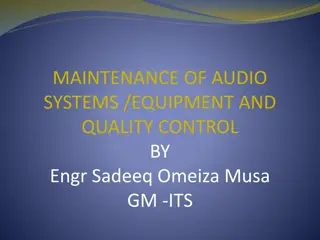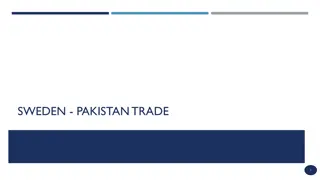Utilizing Instructional Aids in Teaching Pakistan Studies: Enhancing Learning Through Visual and Audio-Visual Materials
Learning and teaching in Pakistan Studies involve the use of instructional aids such as visual aids, audio aids, and audio-visual aids to enhance the teaching-learning process in schools. These aids help in¡n reinforcing knowledge, stimulating sensory organs, and facilitating quick comprehension for students. Audio-visual aids play a crucial role in making education more effective and engaging, thus improving the dissemination of knowledge in the education system.
Download Presentation

Please find below an Image/Link to download the presentation.
The content on the website is provided AS IS for your information and personal use only. It may not be sold, licensed, or shared on other websites without obtaining consent from the author. Download presentation by click this link. If you encounter any issues during the download, it is possible that the publisher has removed the file from their server.
E N D
Presentation Transcript
Unit 5 Instructional Aids in the teaching Instructional Aids in the teaching of Pakistan Studies of Pakistan Studies Week 9 and 10 Lectures 25,26,27,28,29 and 30
Introduction Learning and teaching is the concern of trained teachers. Though learning is a complex process, it can however, be defined as a change in disposition, a relatively permanent change in behavior overtime and this is brought about by experience. Learning can occur as a result of newly acquired skill, knowledge, perception, facts, principles, new information at hand etc. Learning can be reinforced with instructional materials of different variety because they stimulate, motivate and as well as arrest learners attention for a while during the instruction process.
CONT Instructional materials are learning aids and devices through which teaching and learning are done in schools. Instructional materials are those materials used in classroom or workshops for instruction or demonstration purpose by students and teachers.
CONT Examples of instructional materials include visual aids, audio aids, audio-visual aids, real object and many others. The visual aids in form of wall charts illustrated pictures, pictorial materials, textbooks etc. thus audio instructional materials refer to those that make use of the sense of hearing only like the radio, audio tape recorder etc. an audio visual instructional material therefore is a combination of devices which appeals to the sense of both hearing and seeing such as television, motion pictures and computers.
CONT Audio visual aids are important in education system. Audio visual aids are those devices which are used in classrooms to encourage teaching learning process and make it easier and interesting. Audio -visual aids are the best tool for making teaching effective and the best dissemination of knowledge .So there is no doubt that technical devices have greater impact and dynamic informative system.
Definition Instructional aids are devices that assist an instructor in the teaching- learning process. Instructional aids are not self-supporting; they support, supplement, or reinforce what is being taught. Audio- visual aids are instructional devices which are used to communicate messages more effectively through sound and visuals. Audio-visual aids help in stimulating the sensory organs like ears and eyes and facilitate quick comprehension of the message by the audience
CONT According to the Webster dictionary, audio-visual aids is defined as "training or educational materials directed at both the senses of hearing and the sense of sight, films, recordings, photographs, etc. used in classroom instructions, library collections or the likes. Audio- Visual aids are those instructional devices which are used in the classroom to encourage learning and make it easier and interesting. The material like charts, maps ,models, film strip, projectors radio, television etc. called instructional aids.
Importance of A.V. Aids Extending Experience: audio-visual materials help the teacher to overcome physical difficulties of presenting subject matter. That is to say, with audio-visual materials, the barrier of communication and distance is broken. The culture and climatic conditions of other countries can be brought into the classroom with the aid of slides, films, filmstrips and projectors. This is important because, according to Dike (1993) once the phenomenon is visualized, the picture and knowledge becomes very clear and permanent . Agreeing to this assertion, a 20th century Chinese philosopher stated that one picture is worth a thousand words .
Encouraging Participation Audio-visual materials are rich opportunities for students to develop communication skill while actively engaged in solving meaningful problems . In other words, students certainly like it more and learn better if they are engaged in important and appealing activities. For example, involving students in bulletin board display will enhance their choice of colour and aid their understanding of the concept in question or when they join the teacher in dramatization of an event or a process.
Stimulating Interest According to (Katherine M. 2009) learning takes place effectively when the teacher sets out to provide learning situation in which a child will learn because of his natural reactions of the provided materials . During the process of learning, the teacher has to provide the learning situation to satisfy the natural reaction of the learner and this is through the use of instructional aids. The attention of the learner is caught and his interest is also won and he is ready to learn.
Making learning permanent Audio-visual resources can play a major role of making learning permanent. Audio-visual materials are important in the teaching and learning processes because Having seen something, most people remember, for whatever that thing was, it conjures up an image at a mere mention and can be talked about freely. Students forget because of lack of interest and opportunities to use the knowledge they have gained later on. Audio-visual resources can therefore contribute to the clarity of information presented by allowing students to visualize what is learned. Thus the saying: What I hear, I forget What I see, I remember What I do, I know
Types of instructional aids for Pakistan Studies Charts Flash cards Flip charts Model Globe Graphs
CHART A chart is a useful way to present and display information or instructions, especially in a classroom or other educational situation. It can range in size from a large wall chart to asingle piece of paper. A chart is a visual symbol summarizing or comparing or contrasting or performing other helpful services in explaining subjectmatter
FLASH CARDS Flash cards are useful for drilling new letters, words, and other information. They are normally used in a classroom, but can also be used more informally. A flash card is part of a set of cards on which are written items to be studied. They are flashed (shown quickly) one by one to a learner to elicit a quick response.
CONT Flash cards are sets of cards printed with information to be studied, such as definitions formulas letters multiplication tables prefixes words. If there is an answer or solution to what appears on the front of the card, it is printed on the back so that the person showing the cards can see if the learner's answer is correct
Flip charts Flip charts are useful in teaching situations where you need to teach a number of people at a time. They are used when books are unavailable, scarce, or too expensive for individuals to have their own copy when other media such as overheads and slides are not available, and where group learning is most culturally appropriate. A flip chart is a collection of large pages which are bound together at the top. The pages are flipped or brought up and to the back as they are used. A flip chart is bound together at the top in such a way that the pages can be easily turned and lie flat.
MODEL Models are replicas or copies of real objects with suitable change in size, complexity, timing, safety and cost factors. CLASSIFICATION- 1) Simplified 2) Scale 3) Working 4) Cross-sectional 5) Mock-ups
GLOBE a globe is a spherical model of earth
GRAPHS Flat pictures which employ dots, lines or pictures to visualize numerical and statistical data to show statistics or relationships. Graphs are by nature a summarizing device. Effective tools for comparisons and contrast.




